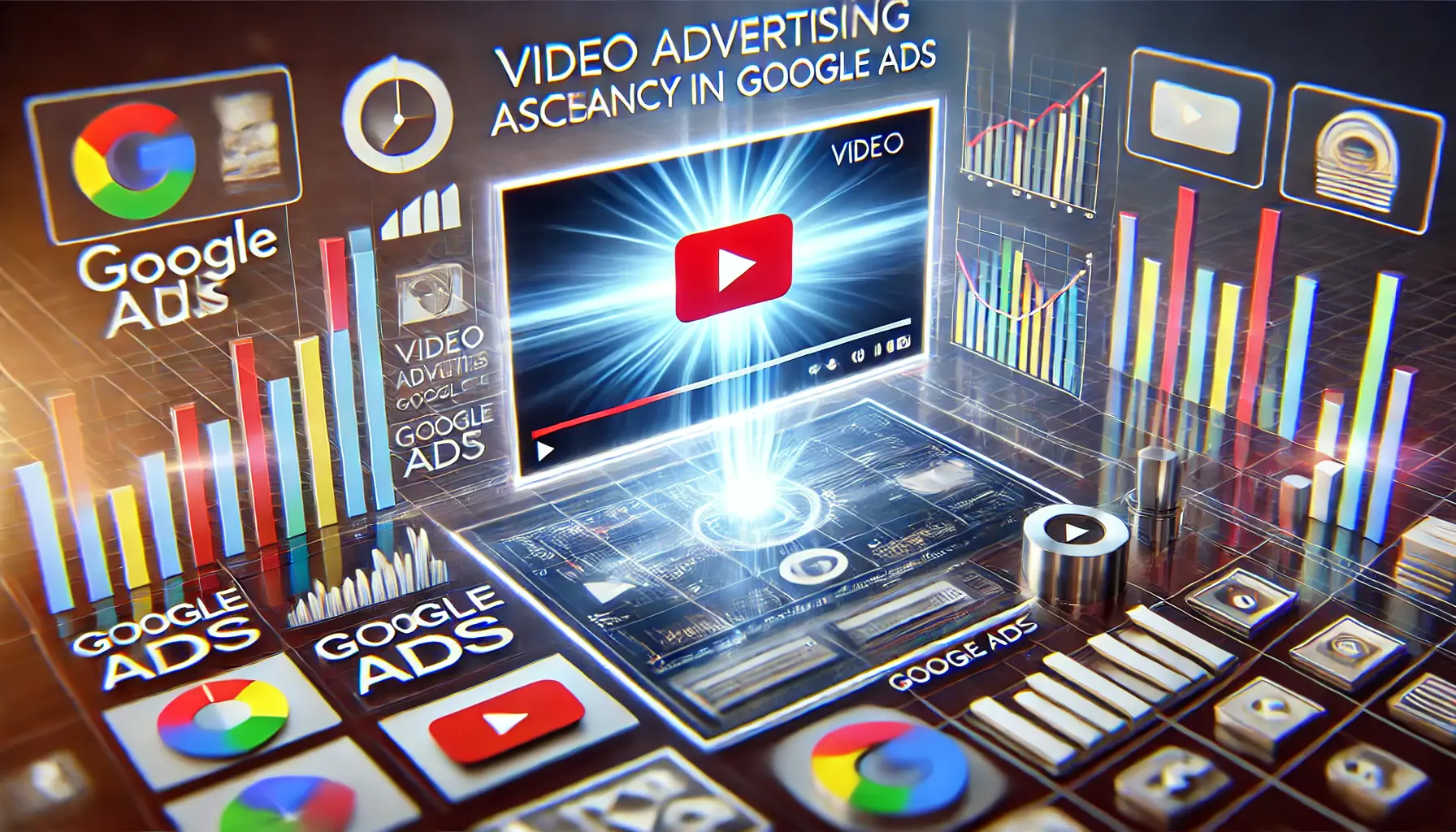As we step into 2024, the digital advertising landscape continues to evolve, with video advertising emerging as a dominant force, particularly on platforms like Facebook.
This shift is not just a fleeting trend but a fundamental change in how brands connect with their audience.
Video advertising on Facebook has become an indispensable tool for marketers looking to engage with their target demographics in more dynamic and impactful ways.
The power of video advertising lies in its ability to convey messages more effectively than traditional formats.
With the increasing consumption of video content, Facebook’s algorithms have adapted to prioritize video ads, making them more visible and engaging to users.
This evolution has led to a significant transformation in the strategies employed by businesses to reach their audience on the platform.
- The Evolution of Facebook’s Video Advertising
- Strategies for Maximizing Engagement in Video Ads
- Targeting and Personalization in Video Ads
- Measuring and Analyzing Video Ad Performance
- Innovations in Video Ad Technology
- Future Trends and Predictions for Video Advertising
- Reflecting on the Future of Video Advertising on Facebook
- FAQs on Facebook Video Advertising in 2024
The Evolution of Facebook’s Video Advertising
Facebook’s video advertising landscape in 2024 is largely shaped by the evolving preferences and behaviors of its users.
With a shift towards shorter attention spans and a preference for visual content, video ads have become a more effective way to capture user interest.
This change has prompted advertisers to rethink their content strategies, focusing on creating short, engaging, and visually appealing videos that can convey their message quickly and effectively.
Moreover, the rise of mobile usage has played a crucial role in this evolution.
As more users access Facebook on their mobile devices, the platform has optimized its video advertising formats to be mobile-friendly, ensuring a seamless viewing experience.
This mobile-first approach has opened new avenues for advertisers to create content that resonates with a mobile audience, using vertical videos and interactive elements to enhance engagement.
Embracing New Video Formats
In response to these user behavior changes, Facebook has introduced a variety of video ad formats to cater to different marketing objectives.
From in-stream ads that appear within Facebook videos to Stories ads that leverage the full-screen vertical format, these options provide businesses with multiple ways to reach their audience.
Each format offers unique advantages, whether it’s the immersive experience of Stories ads or the contextual placement of in-stream ads.
One of the standout formats in 2024 is the use of interactive video ads.
These ads not only capture attention but also encourage user interaction, leading to higher engagement rates.
Features like shoppable tags, polls, and call-to-action buttons have transformed passive viewers into active participants, creating a more memorable ad experience and driving better campaign results.
Key Point: The evolution of Facebook’s video advertising in 2024 is marked by a shift towards mobile-optimized, interactive, and visually engaging content, aligning with user preferences and behaviors.
Strategies for Maximizing Engagement in Video Ads
To effectively harness the power of video advertising on Facebook in 2024, marketers must adopt strategies that maximize engagement and resonate with their audience.
This involves understanding the nuances of video content and how it can be optimized for better performance on the platform.
Crafting Compelling Storytelling
At the heart of successful video advertising is compelling storytelling.
Brands need to craft narratives that not only showcase their products or services but also connect with the audience on an emotional level.
This storytelling approach helps in creating a memorable impact, making the brand more relatable and engaging to the viewers.
Effective storytelling in video ads often includes:
- Creating a narrative arc that captures attention from the beginning and maintains it throughout the video.
- Using relatable characters or scenarios that resonate with the target audience.
- Incorporating elements of humor, inspiration, or other emotions that align with the brand’s message.
Leveraging User-Generated Content
User-generated content (UGC) has emerged as a powerful tool in video advertising.
By featuring real customers and their experiences, brands can build trust and authenticity.
UGC not only adds a layer of credibility to the ad but also encourages more users to engage and share their own experiences, creating a ripple effect of engagement.
Key aspects of leveraging UGC in video ads include:
- Encouraging customers to share their stories or experiences with the brand.
- Curating high-quality UGC that aligns with the brand’s messaging and aesthetic.
- Integrating UGC seamlessly into the ad campaign to complement the brand’s original content.
Optimizing for Silent Viewing
With many users scrolling through their Facebook feed in silent mode, optimizing video ads for silent viewing is crucial.
This involves ensuring that the message of the video is conveyed effectively even without sound.
Subtitles, on-screen text, and visually descriptive content play a significant role in achieving this.
Strategies for silent viewing optimization include:
- Using captions and subtitles to make the video accessible and understandable without audio.
- Incorporating visually compelling elements that tell the story or highlight key points.
- Designing the first few seconds of the video to be attention-grabbing even without sound.
Idea: Embracing storytelling, leveraging user-generated content, and optimizing for silent viewing are key strategies for maximizing engagement in Facebook video ads in 2024.
Targeting and Personalization in Video Ads
One of the strengths of Facebook’s advertising platform is its robust targeting and personalization capabilities.
In 2024, these features have become even more sophisticated, allowing marketers to deliver highly relevant video content to specific audience segments.
Understanding Audience Segmentation
Effective targeting begins with a deep understanding of the audience.
Marketers need to segment their audience based on various criteria such as demographics, interests, behaviors, and more.
This segmentation enables the creation of tailored video ads that resonate with each group, increasing the likelihood of engagement and conversion.
- Demographic targeting focuses on age, gender, location, and other personal attributes.
- Interest targeting leverages user preferences and likes to deliver relevant content.
- Behavioral targeting looks at past actions, such as purchase history or website visits, to predict future interests.
Personalizing Video Content
Personalization in video ads goes beyond basic targeting.
It involves creating content that speaks directly to the viewer, addressing their specific needs or interests.
This can be achieved through dynamic video ads that change based on who is viewing them, offering a unique and personalized experience for each user.
Key elements of personalizing video content include:
- Using data insights to understand what resonates with different audience segments.
- Creating multiple versions of a video ad, each tailored to different segments.
- Employing dynamic elements within the video that change based on user data.
Utilizing Retargeting Strategies
Retargeting is a powerful tactic in video advertising, allowing brands to re-engage with users who have shown interest in their products or services.
By targeting viewers who have interacted with previous ads or visited the brand’s website, marketers can increase the chances of conversion through familiar and relevant content.
Effective retargeting strategies involve:
- Segmenting audiences based on their interaction level with the brand.
- Creating customized video content that addresses the specific interests or needs of these segments.
- Using retargeting to remind users of products they viewed but did not purchase, encouraging them to complete the transaction.
Note: Targeting and personalization are key to the success of video advertising on Facebook, enabling brands to deliver relevant and engaging content to their audience.
Measuring and Analyzing Video Ad Performance
In the dynamic landscape of Facebook’s video advertising, measuring and analyzing ad performance is crucial for understanding the impact of campaigns and making data-driven decisions.
In 2024, the tools and metrics available for this analysis have become more advanced, offering deeper insights into ad effectiveness.
Key Performance Metrics
Understanding the right metrics to track is essential for evaluating the success of video ads.
These metrics provide a clear picture of how the audience is interacting with the content and the overall impact on campaign goals.
- Engagement metrics such as likes, shares, and comments indicate how compelling the video is to the audience.
- View-through rate (VTR) measures the percentage of the video watched by viewers, reflecting content engagement.
- Click-through rate (CTR) assesses how effectively the video encourages viewers to take a desired action.
- Conversion rate tracks the percentage of viewers who complete a specific action, like making a purchase.
Utilizing Analytics Tools
Facebook provides a range of analytics tools that help advertisers dive deep into the performance of their video ads.
These tools offer insights into audience behavior, ad reach, engagement levels, and conversion rates.
By leveraging these analytics, marketers can fine-tune their strategies for better results.
Effective use of analytics tools includes:
- Analyzing demographic data to understand who is engaging with the ads.
- Tracking engagement trends over time to identify patterns and optimize content accordingly.
- Measuring conversion data to determine the ROI of video ad campaigns.
Optimizing Based on Insights
The ultimate goal of measuring and analyzing video ad performance is to optimize future campaigns.
Insights gained from data analysis should inform decisions on content creation, targeting, and ad placement, leading to continuous improvement in ad effectiveness.
Key optimization strategies include:
- Adjusting video content based on engagement metrics to better resonate with the audience.
- Refining targeting parameters to reach more relevant segments.
- Experimenting with different ad formats and placements to see what works best.
Truth: Regular measurement and analysis of video ad performance are essential for optimizing campaigns and achieving better results on Facebook’s advertising platform.
Innovations in Video Ad Technology
The year 2024 has seen significant advancements in video ad technology on Facebook, offering new opportunities for brands to create more impactful and engaging ads.
These innovations are not just about delivering content but also about enhancing the viewer’s experience and interaction with the ads.
Artificial Intelligence and Machine Learning
Artificial Intelligence (AI) and Machine Learning (ML) have become integral in optimizing video ad content and delivery.
These technologies enable more efficient targeting, personalized content creation, and predictive analysis, leading to higher engagement and conversion rates.
- AI-driven algorithms help in identifying the best audience segments for specific video content.
- Machine Learning models analyze user behavior to predict which video ads are likely to perform better.
- Automated content creation tools use AI to generate or edit video ads, saving time and resources.
Augmented Reality and Interactive Features
Augmented Reality (AR) and interactive features have taken video ads to a new level of engagement.
AR allows users to interact with products in a virtual environment, providing a unique and immersive experience.
Interactive features like polls, quizzes, and shoppable tags make ads more engaging and actionable.
Key advancements in AR and interactivity include:
- AR filters and effects that allow users to virtually try products or interact with brand elements.
- Interactive elements that encourage user participation and increase ad engagement.
- Shoppable video ads that enable direct purchases from the ad, streamlining the shopping experience.
Enhanced Video Quality and Formats
The quality and format of video ads have also seen significant improvements.
High-definition videos, 360-degree views, and vertical formats are becoming more prevalent, catering to the evolving preferences of Facebook users and the capabilities of modern devices.
Advancements in video quality and formats involve:
- Utilizing high-resolution videos for clearer and more visually appealing content.
- Creating 360-degree video ads that offer an immersive viewing experience.
- Adopting vertical video formats optimized for mobile viewing.
Featured Info: The integration of AI, AR, and enhanced video quality are key innovations in Facebook’s video ad technology, offering new ways for brands to engage with their audience in 2024.
Future Trends and Predictions for Video Advertising
As we look beyond 2024, the realm of video advertising on Facebook is poised for even more transformative changes.
Staying ahead of these trends is crucial for marketers aiming to maintain a competitive edge in the ever-evolving digital advertising landscape.
Continued Rise of Short-Form Video Content
Short-form video content has gained immense popularity, and this trend is expected to continue growing.
These concise, engaging videos cater to the decreasing attention spans of users and are ideal for storytelling, brand introductions, and call-to-action messages.
- Brands will increasingly adopt short-form videos for their ability to convey messages quickly and effectively.
- Platforms like Facebook will further optimize their algorithms to favor short-form content, enhancing its reach and engagement.
Increased Emphasis on Video Ad Authenticity
Authenticity in video advertising will become more important as consumers seek genuine connections with brands.
Authentic content resonates more deeply with audiences, fostering trust and loyalty.
Future trends in authenticity include:
- Brands focusing on real stories, customer testimonials, and behind-the-scenes content to build authenticity.
- Increased use of user-generated content to enhance the relatability and credibility of video ads.
Advancements in Interactive and Immersive Technologies
Interactive and immersive technologies like AR and VR (Virtual Reality) will play a larger role in video advertising.
These technologies offer novel ways for users to engage with brands, creating memorable and impactful ad experiences.
Key advancements to watch for include:
- The integration of VR elements in video ads, offering a fully immersive brand experience.
- More sophisticated AR features that allow for interactive and engaging product demonstrations.
Embracing Sustainability and Social Responsibility
As societal focus on sustainability and social responsibility intensifies, brands will need to align their video advertising content with these values.
This alignment not only appeals to the ethical considerations of consumers but also strengthens brand reputation and loyalty.
- Video ads will increasingly reflect a brand’s commitment to sustainability and social responsibility.
- Content that highlights eco-friendly practices, ethical sourcing, and community involvement will become more prevalent.
Idea: The future of video advertising on Facebook will be shaped by the continued rise of short-form content, a focus on authenticity, advancements in technology, and an alignment with sustainability and social responsibility.
Reflecting on the Future of Video Advertising on Facebook
As we conclude our exploration of video advertising’s dominance in Facebook’s 2024 ad landscape, it’s clear that this medium has not only transformed how brands communicate with their audience but also set a new standard for digital marketing.
The evolution of video advertising on Facebook reflects a broader shift in consumer preferences and technological advancements, pointing towards a future where video content is central to online engagement.
Key Takeaways and Future Insights
The journey through the various facets of Facebook’s video advertising has unveiled several key insights.
From the evolution of ad formats to the sophisticated use of targeting and personalization, each aspect contributes to a more engaging and effective advertising experience.
The integration of AI, AR, and other technological innovations has opened new avenues for creativity and interaction, making video ads not just a marketing tool but an immersive experience for the audience.
Looking ahead, several trends are set to shape the future of video advertising on Facebook:
- The growing importance of short-form video content, catering to the fast-paced, mobile-first world.
- A stronger emphasis on authenticity and storytelling, building deeper connections with audiences.
- Continued advancements in interactive and immersive technologies, enhancing user engagement.
- An increasing focus on aligning brand messages with societal values like sustainability and social responsibility.
In summary, video advertising on Facebook is not just about promoting a product or service; it’s about creating a narrative, an experience that resonates with the audience.
As we move forward, the brands that succeed will be those that understand and leverage these dynamics, creating content that is not only seen but felt and remembered.
Enjoyed the article? Let its author handle your social media ads. Visit our service page to get started!
FAQs on Facebook Video Advertising in 2024
As Facebook video advertising continues to evolve, it’s important to stay informed about the latest trends and best practices.
Here are some frequently asked questions to help you navigate this dynamic landscape.
Facebook video ads’ effectiveness in 2024 lies in their ability to engage users with compelling storytelling, personalized content, and advanced targeting capabilities.
Ideal Facebook video ad length in 2024 is short, focusing on capturing attention quickly while delivering a clear and concise message.
Yes, Facebook’s advanced targeting options in 2024 allow for highly personalized video ads tailored to different audience segments.
Key metrics include engagement rates, view-through rates, click-through rates, and conversion rates, providing insights into ad performance.
High video quality is crucial in 2024 for engaging viewers and conveying a professional brand image on Facebook.
Interactive elements in video ads enhance user engagement and can lead to higher conversion rates on Facebook.
AI and AR technologies in 2024 offer personalized, immersive ad experiences, making Facebook video ads more effective and engaging.
Future trends include the rise of short-form content, emphasis on authenticity, and advancements in interactive technologies.










